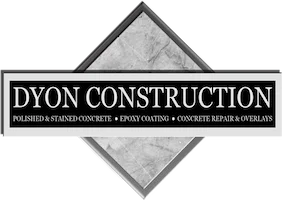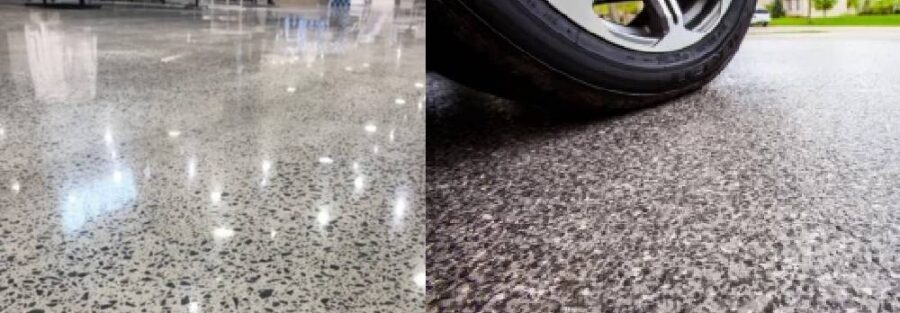Introduction
Choosing the right flooring for your home is a pivotal decision that influences aesthetics and functionality. With myriad options available, two popular choices stand out: epoxy flooring and polished concrete. Both have their unique merits and drawbacks, making the decision challenging. This article delves into the intricacies of these two flooring solutions, providing a comprehensive comparison to help you make an informed choice.
Overview of Epoxy Flooring
Epoxy flooring, a blend of resin and hardeners, forms a robust and durable surface often used in industrial and commercial settings. When applied to a concrete substrate, the mixture creates a seamless and high-gloss finish that is visually appealing and highly practical. Epoxy flooring is renowned for its resilience, being resistant to chemicals, stains, and impact. Its versatility allows for a variety of colors and patterns, making it an attractive option for homeowners seeking a modern and sleek look.
Overview of Polished Concrete
Polished concrete, on the other hand, transforms a standard concrete slab into a smooth, glossy surface through a multi-step process of grinding, honing, and polishing. This technique not only enhances the concrete’s inherent strength but also produces a lustrous finish that rivals the elegance of more expensive flooring materials. Polished concrete is appreciated for its minimalistic and industrial aesthetic, often chosen for contemporary home designs. Additionally, its eco-friendly nature and excellent thermal properties make it a favorite among environmentally conscious homeowners.
Pros and Cons of Epoxy Flooring
Epoxy flooring offers numerous advantages. It is highly durable, capable of withstanding heavy foot traffic, and resistant to wear and tear. Its seamless surface makes cleaning a breeze, eliminating the crevices where dirt and bacteria can accumulate. Moreover, epoxy flooring is highly customizable, with options ranging from solid colors to intricate designs, allowing homeowners to personalize their space.
However, epoxy flooring is not without its drawbacks. The installation process can be complex and time-consuming, often requiring professional expertise. It also emits strong fumes during application, necessitating proper ventilation. Over time, exposure to UV light can cause the epoxy to yellow or fade, which may be a concern for areas with significant sunlight exposure. Additionally, while epoxy is durable, it can become slippery when wet, posing a potential safety hazard.
Pros and Cons of Polished Concrete
Polished concrete boasts a myriad of benefits. Its durability is unparalleled, capable of withstanding heavy loads and high traffic without significant wear. The polished surface is low maintenance, requiring only periodic cleaning to maintain its shine. Furthermore, polished concrete enhances ambient lighting due to its reflective surface, potentially reducing energy costs. It is also a sustainable option, utilizing the existing concrete slab and reducing the need for additional materials.
Nevertheless, polished concrete has its disadvantages. The initial grinding and polishing process can be noisy and disruptive, potentially unsuitable for occupied homes. The surface, while durable, can develop cracks over time due to the natural settling of the concrete. Polished concrete can also feel cold and hard underfoot, which might be less comfortable in living spaces compared to other flooring options. Additionally, it offers limited design flexibility compared to epoxy, as it primarily relies on the natural appearance of the concrete.
Cost Comparison
Cost is a significant factor in the flooring decision. Epoxy flooring generally involves higher upfront costs due to the materials and professional installation required. Prices can vary widely based on the complexity of the design and the quality of the epoxy used. However, its longevity and minimal maintenance can offer cost savings over time.
Polished concrete, conversely, tends to have a lower initial cost, especially if the existing concrete slab is in good condition. The polishing process, while labor-intensive, is less expensive than applying multiple layers of epoxy. Maintenance costs are also relatively low, making polished concrete an economical choice in the long run.
Maintenance Comparison
Maintenance is another crucial consideration. Epoxy flooring requires routine cleaning with a mild detergent and occasional resealing to maintain its appearance and protect against damage. While relatively low-maintenance, any significant damage, such as deep scratches or chips, may necessitate professional repair.
Polished concrete, known for its ease of upkeep, demands minimal maintenance. Regular sweeping and mopping with a pH-neutral cleaner are typically sufficient to keep the surface looking pristine. Periodic re-polishing may be necessary to restore its original luster, but this is infrequent and straightforward.
Best Applications for Each
Epoxy flooring excels in environments where durability and chemical resistance are paramount. It is ideal for garages, basements, and workshops, where its robust nature can withstand the rigors of heavy use. Its customizable aesthetic also makes it suitable for modern living areas and kitchens, provided proper precautions are taken to mitigate slipperiness.
Polished concrete shines in open-concept spaces, contemporary homes, and areas where an industrial or minimalist look is desired. It is well-suited for living rooms, hallways, and large commercial spaces. Its thermal properties also make it a good candidate for homes with underfloor heating systems.
Conclusion
Both epoxy flooring and polished concrete offer unique benefits that cater to different needs and preferences. Epoxy flooring stands out for its durability and design versatility, making it suitable for areas requiring robust performance and aesthetic customization. Polished concrete, with its eco-friendly appeal and low maintenance, is perfect for those seeking a sleek and modern look with minimal upkeep. Ultimately, the choice between the two will depend on your specific requirements, budget, and design vision for your home.

